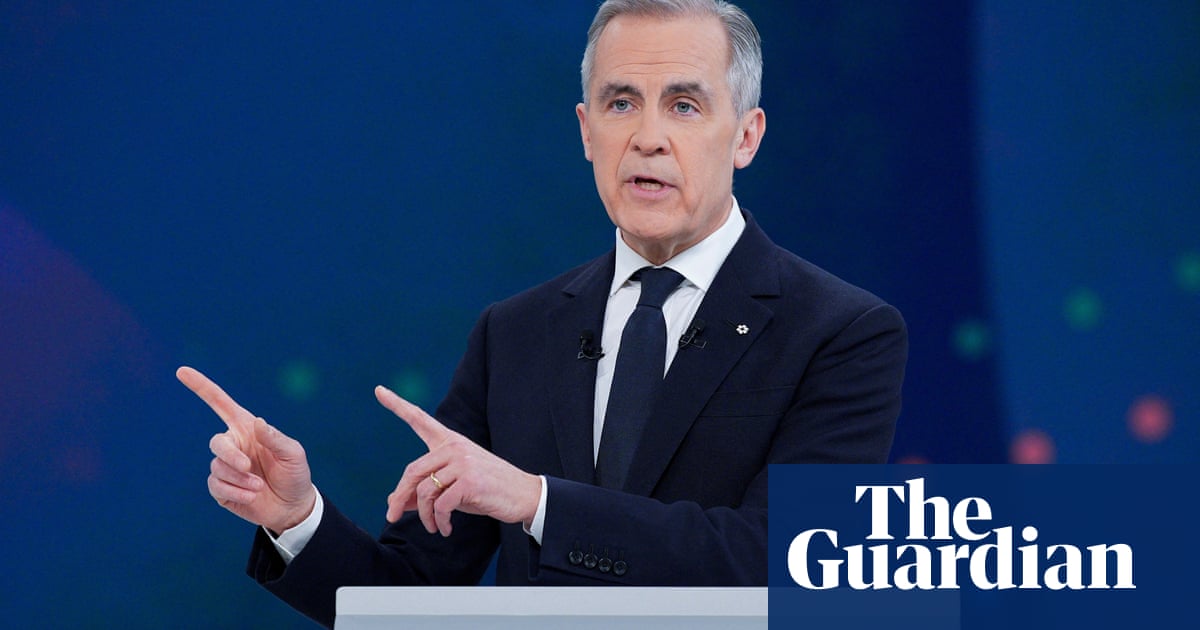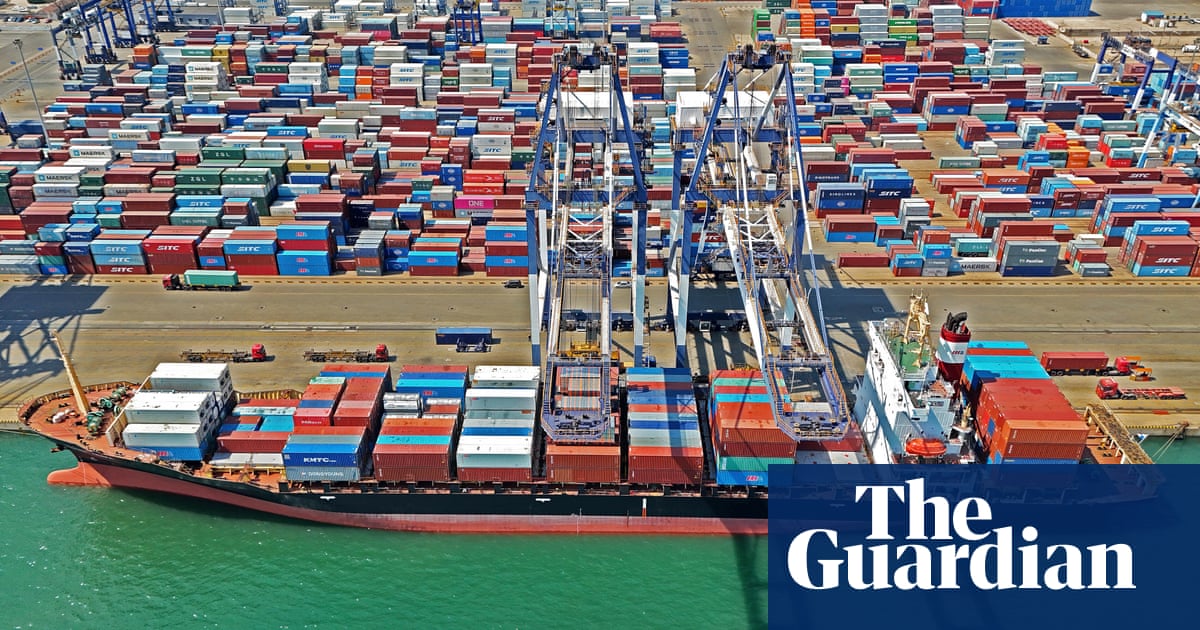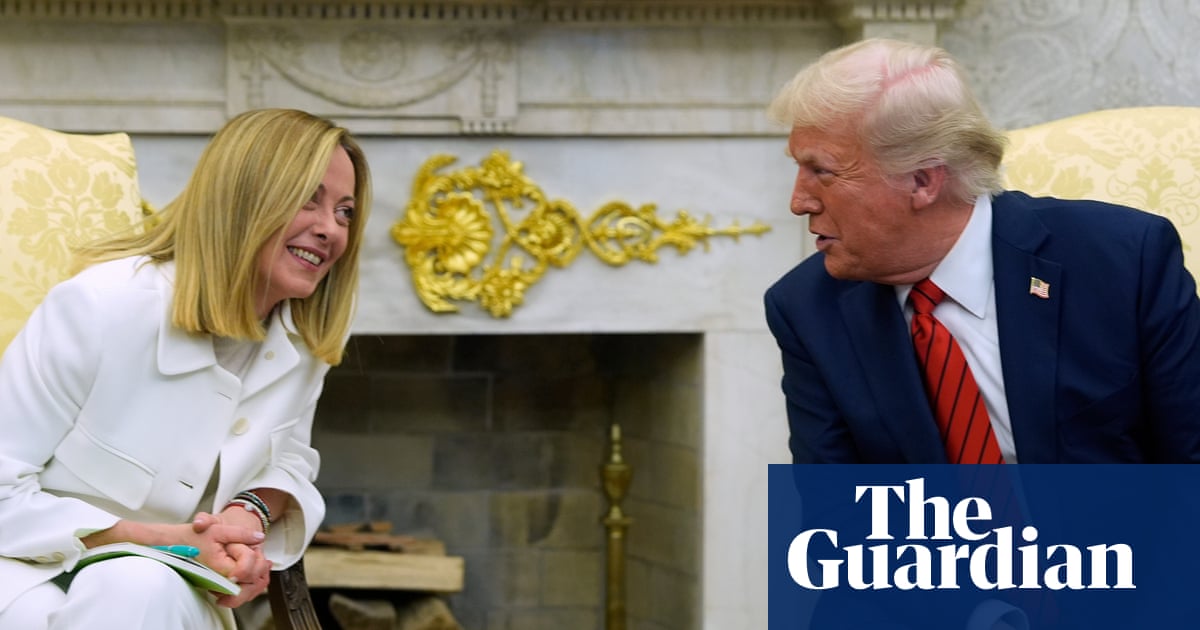Donald Trump’s trade war with China entered a new phase on Thursday, as Beijing’s 84% retaliatory tariffs came into effect hours after the US president announced a pause of steep reciprocal tariffs on dozens of countries except China.
Markets rebounded after Trump’s announcement of the sudden pause, after the most volatile episode in financial markets since the pandemic.
Taiwan stocks surged 9.2% in early trading on Thursday. In Japan, the Nikkei 225 was up 7.2%, while in Seoul the Kospi was up over 5%. In Australia the ASX 200 jumped more than 6%. Hong Kong’s Hang Seng Index climbed 2.69%, while the Shanghai Composite Index jumped 1.29%.
On Wall Street on Wednesday, the Dow index soared to close nearly 8% higher while the Nasdaq rose 12.2% to notch its best day in 24 years, after the announcement of the pause.
However, tariffs against Chinese goods now stand at 125%, and Beijing has vowed to “fight to the end”. A China Daily editorial published on Wednesday night said “caving in to the US pressure is out of the question for Beijing”.
The head of the WTO said on Wednesday that an escalating US-China tariff war could cut trade in goods between the two countries by 80%. Given the two economic giants account for 3% of world trade, the conflict could “severely damage the global economic outlook”, Ngozi Okonjo-Iweala said.
Trump’s sudden change of heart, amid growing fears the US was headed towards a recession, saw a dramatic revival in share markets across Asia. The US president’s 90-day pause maintained the blanket global 10% tariff but halted the steeper reciprocal tariffs.
“I thought that people were jumping a little bit out of line, they were getting yippy, you know,” Trump said on Wednesday when asked why he had announced the pause.
Beijing said on Wednesday it would impose 84% on US products from midday local time on Thursday, put 18 US companies on trade restriction lists, and bring in other countermeasures. It came after Trump’s “liberation day” announcement of a global tariff regime, which added a 34% tariff to the 20% already levelled at China, prompting Beijing to announce reciprocal tariffs of 34%.
Trump warned China to withdraw it or he would respond but China refused, and the two sides embarked on a series of tit-for-tat raises. Trump pledged a levy of 104% and then 125% against Chinese imports, and left them in place while announcing a reprieve elsewhere.
“At some point, hopefully in the near future, China will realise that the days of ripping off the USA, and other countries, is no longer sustainable or acceptable,” Trump wrote, as he unveiled the latest US tariff assault on China.
The China Daily editorial on Wednesday said: “It is not that China does not understand what the unprecedentedly high tariffs mean for its exports and the economy in general.
“Profits of export-oriented industries will take a blow and the resulting decline in manufacturing investment and consumer sentiment will dampen economic growth. But it also knows that kowtowing to the US’s tariff bullying will gain it nothing, given that it is no secret the US is now intent on cutting China out of its consumer market and reshaping the global supply chains to serve its own narrow interests.”
China appears to be approaching other countries in an apparent attempt to shore up trading agreements away from the US.
China’s commerce minister, Wang Wentao, has said in talks with his Malaysian counterpart that they’re willing to work with Asean trading partners to strengthen coordination. He also spoke to the EU trade and security commissioner on Tuesday, saying China was willing to deepen trade, investment and industrial cooperation, and that China and the EU will immediately restart negotiations on electric vehicles.
Meanwhile attempts to “join hands” with Australia – which relies heavily on China for trade but has a deep alliance with the US – were rebuffed by the country’s defence minister, Richard Marles.
“We’re not about to make common cause with China, that’s not what’s going to happen here,” Marles told local media. “We don’t want to see a trade war between America and China, to be clear, but our focus is on actually diversifying our trade.”
Trump has dismissed the market volatility, saying “sometimes you have to take medicine”, but appeared to waver as predictions of a US recession grew stronger.
World governments which were facing higher export tariffs welcomed Trump’s pause, but many are still affected by sector-based tariffs.
“We received the latest US announcement positively,” Japan’s chief government spokesperson, Yoshimasa Hayashi, told a regular briefing. But he added: “We continue to strongly demand that the United States reviews measures on its reciprocal tariffs, tariffs on steel and aluminium, and tariffs on vehicles and auto parts.”
EU member states, meanwhile, had approved retaliatory 25% tariffs on up to $23bn in US goods – targeting farm produce and products from Republican states – from next week, in response to sweeping tariffs on steel and aluminium imposed by Trump last month.
Trump announced his decision at the same time as a congressional hearing featuring Jamieson Greer, his US trade representative.
“It looks like your boss just pulled the rug out from under you,” the Democratic representative Steven Horsford of Nevada told Greer. “This is amateur hour, and it needs to stop.”
Agencies contributed to this report

.png) 1 week ago
10
1 week ago
10













































